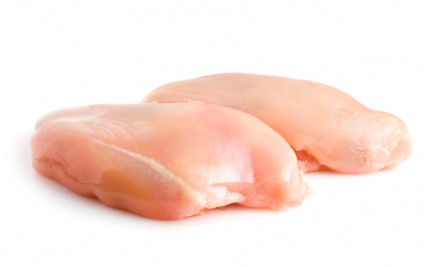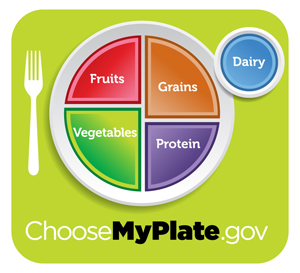The collective wisdom in press reports last week was that the USDA’s new “easy to understand” ChooseMyPlate image is “better” than the old pyramid. Well, that’s not saying much. But it’s also completely beside the point. Sure, it’s easy to poke fun at how bad the pyramid image was (and I had a ball doing so in my book), but just comparing images misses the larger issue: that the whole damn exercise of trying to educate the American public with a simple image is beyond pointless — it’s downright insulting.
But before I explain, allow me to get a few things about the new image off my chest. First, the website URL tells us a lot: ChooseMyPlate.gov. The words choose and choice — why are they ringing a bell? Oh yes, they’re favorites of the food industry, to remind us that it’s really all up to individuals to choose to eat a healthy diet, and that companies provide a wide range of choices for us each to choose from. Never mind that for too many Americans, the choices in their neighborhood range from McDonald’s to Burger King. That the government is using such a construction for dietary advice tells us that it doesn’t want to rub industry the wrong way by (God forbid) actually telling Americans how we should eat for optimum health.
Much has been made of how brave it was for USDA to depict half of the plate with fruits and vegetables. Yes, that does represent a significant departure from the past and I’m willing to give some credit here. But that victory is quickly overshadowed by two other, scientifically questionable recommendations: protein and dairy. As Marion Nestle pointed out, protein is not a food, it’s a nutrient, so the meat industry must be very happy to see it represented so prominently, as they have brainwashed the American public for decades into equating “meat” with “protein.” Most Americans eat way too much protein and certainly need no reminders.
But even more troubling is the placement of dairy as a circle image to the side, as if to say the government recommends that we all drink a glass of milk with every single meal, never mind those who are lactose-intolerant or simply choose not to consume dairy. It seems USDA could not make up its mind on whether to recommend food or nutrients on the plate. They recommend “protein” but then why is “dairy” and not “calcium” recommended? Ah, the politics of inconsistent messaging.
OK, now that my griping is out of the way, here’s why nothing that I just wrote even matters: Education alone will not improve dietary habits. The entire exercise of using an image (and a website, etc.) to educate the American public to get us to eat right is doomed to failure, as decades of history have already shown us. This concept is not specific to eating; it applies across the spectrum of public-health issues. To paraphrase my public-health colleague Harold Goldstein: There is not a single public-health crisis in history that has been solved with a brochure.
Name the health behavior you want to change: smoking, drinking, eating, wearing seat belts, wearing bike helmets, having safe sex, etc. — none of them can be changed with just education. Rather, policy is needed to change the environment that people live in to help them make healthier choices. Many articles and books have been written on this subject. Just ask any health educator how hard their job is, especially dietitians.
It’s going to take way more than a measly $2 million educational campaign to get Americans to fill up half their plates with fruits and vegetables. It’s going to take a massive overhaul of our agricultural policies, as is depicted in this handy pie chart from Physicians Committee for Responsible Medicine and as explained by writer Melanie Warner.
It’s also going to take addressing the billions of dollars the food industry spends on marketing each year to keep us from eating off of plates at all. (Perhaps a better image might have been a pizza box or a take-out carton?) It’s especially going to take massive political will to stop the food industry’s predatory marketing of junk food to children. Ironically, the federal government is currently asking for comments on proposed guidelines for food companies to change how they market to kids. Industry is up in arms over it, despite the fact that the guidelines will be completely voluntary. I could go on, but you get the idea.
So, I really don’t care if the new plate is “easier” or “better” than the old pyramid. Even if the plate was full of nothing but locally grown, organic, fresh produce, that image would only serve as a painful reminder to too many Americans that eating that way on a regular basis is sadly out of reach. Only policy can change that.




